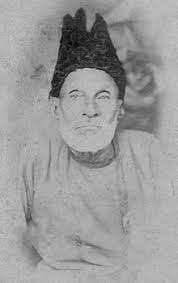Asutosh Museum of Indian Art
- Built in 1937, the Asutosh Museum of Indian Art holds the distinction of being the first public museum in an Indian university. The museum is named after Sir Asutosh Mookerjee who introduced the study of Indology including Indian art and archaeology at the university level. A bust statue of tis great educationist stands at the entrance of the museum. The objective of the museum is to preserve and study Indian art and antiquity particularly of eastern India.
- Today the display includes more than 25,000 items consisting of sculptures, paintings, folk-art objects, manuscripts, coins, textiles, terracottas, etc. of diverse array. The museum is spread across two floors and four galleries.
- Initially, the collections were housed in the rear portion of the old Senate Hall and then shifted to Murshidabad Imambada. The heavy stone sculptures were deposited underground in 1942, due to the threat of bombing during World War II. The collections were returned to the Senate Hall for five years. In1960 the artifacts were shifted temporarily and then transferred to the present location at the Centenary Building of the University (College Street Campus) in 1967. In 1959, the University of Calcutta instituted a Postgraduate Diploma Course in Museology and the Museum served as the base and a working laboratory for this course.
- Ground Floor Gallery: This gallery showcases sculptures excavated from various parts of Bengal. Sculptures from Orissa, Madhya Pradesh, Maharashtra and other states also stand majestically. Items excavated from Mohenjodaro civilization are on display. A Vishnu Vasudeva sculpture in black basalt from Jessore stands here. Sculptures date back to about first century B.C. right up to recent times. Sculpture from the Pala-Sena period stands as a testimony to the artistic development in Bengal and Bihar in early medieval period. The unique terracotta collection originates from various noted archaeological sites of Bengal like Chandraketugarh, Harinarayanpur, Tamluk, Bangarh, Paharpur, etc. This collection also includes some rare terracotta specimens from different north Indian sites such as Patna, Nalanda, Kausambi, Rajghat. The rarest wooden sculpture of the Museum is a standing figure of Gopala of 16th century A.D. from Malda. The carved wooden brackets from South and Western India, originally used as corner support for thatched huts or wooden structures are crowded with battle scenes having human and animal figures, creepers and foliages.
- The first floor houses two galleries: one dedicated to ancient folk art and the other gallery bears coins and metal items. The corridor in between the two galleries displays masks from different parts of India. The folk art artifacts include handloom textiles, folk toys, dolls, wooden sculptures and paintings including Pata chitra, Kalighat painting and miniature paintings etc. Art forms of Sri Lanka, Tibet and Nepal are also preserved here. Scroll paintings depicting legendary tales are seen. A unique illustrated paper manuscript dated A.D. 1105 from Nepal (perhaps the earliest known paper manuscript) happens to be a rare specimen of antiquity in the Museum.
- This description falls short in justifying the priceless collectibles arranged chronologically and preserved meticulously. Restoration and maintenance work is carried out by experts. Few people know about this rich museum and thus it has less number of visitors. Photography is strictly prohibited for visitors although special permit may be obtained by researchers and students.
Date of
visit: 14.03.2024
.jpg)
Antique sculptures on display .jpg)
Ground Floor gallery
 |
| The Entrance |
References:
1. https://www.caluniv.ac.in/museum/museum.html
2.



Comments
Post a Comment